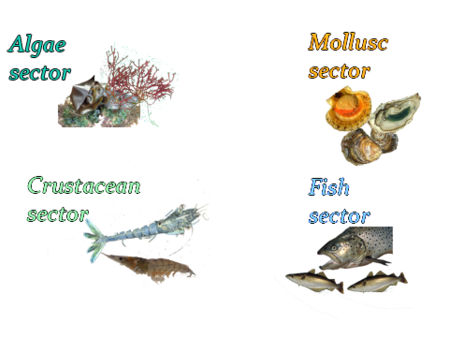Meagre
Name : FAO Names: | Meagre |
|---|---|
Scientific name : | Argyrosomus regius, family Sciaenidae |
Size : | Meagre can reach 230 cm, and can weigh more than 100 kg |
History: from the early days to the present
Meagre aquaculture has only recently developed, starting in the mid 1990s in Southern France, and is much less advanced than for developed farm fish species such as seabass, seabream or turbot.
The first production figures date from 1997. Today, meagre is produced in several countries in the Mediterranean basin. However, even though techniques for the different stages of rearing are fairly well established, production has not yet reached its full potential and rearing experiments are still very limited.
Rearing techniques and production cycle
Like seabass, meagre is a gonochoric species. Meagres are either male or female. Spawning can be obtained spontaneously in captivity, but producers sometimes use GnRH-type hormones to induce spawning at the desired time. It is difficult to judge the age of first maturity in meagre. Females produced and reared in captivity reproduce at about 5 years. Eggs are between 0.9 and 1 mm in diameter. The larvae obtained measure about 2 mm.
It is possible to spawn meagre throughout the year with controlled temperature and photophase.
Meagre has a classic feeding scheme. Larvae are first fed on rotifers, then on the larvae of small crustaceans (Artemia salina at the nauplius stage). They are then weaned, and given an inert feed (micro-granulates).
Weaning takes place between one and three and a half months after hatching. The fish are particularly prone to cannibalism during this period.
Meagres can be grown in sea cages but also in ponds on land. Under normal density conditions, they reach 1.2-1.5 kg in two years of cage rearing (information provided by producers).
Trends in meagre production
The first production figures for meagre in France date from 1997. Today, production is concentrated in Southern France and Corsica.
Even though France was a pioneer in the aquaculture of this species, in 2005, French production represented only 30 % of the worldwide volume of commercial-size meagre.
This contribution continues to decline, though France is still the top exporting country for meagre alevins.
Product marketing
Meagres are sold between 1 and 3 kg fresh weight, whole or as fillets.
The largest fillets can be smoked in some cases.
An application for quality labelling has been filed (Label Rouge and Indication Geographique Protégé - IGP), led by the Corsican Aquaculturalist’s Union (Syndicat des Aquaculteurs Corses).
Meagre figures
From Figis – FAO production figures 2005
270 | Tonnage of French aquacultural production |
|---|---|
1500 | Total tonnage (fisheries and aquaculture) produced in France in 2005. Aquaculture represents 18 % of the total tonnage |
800 | Aquacultural production tonnage in the Mediterranean. France contributes 33 % of this total. |
6 | Number of farms producing meagre in France. These farms all also produce seabass or seabream (information from the National Sea Fisheries and Fish Farming Board - Comité National des Pêches Maritimes et des Elevages Marins - CNPMEM). |
Strengths/Weaknesses
Strengths | Weaknesses |
|---|---|
|
|

